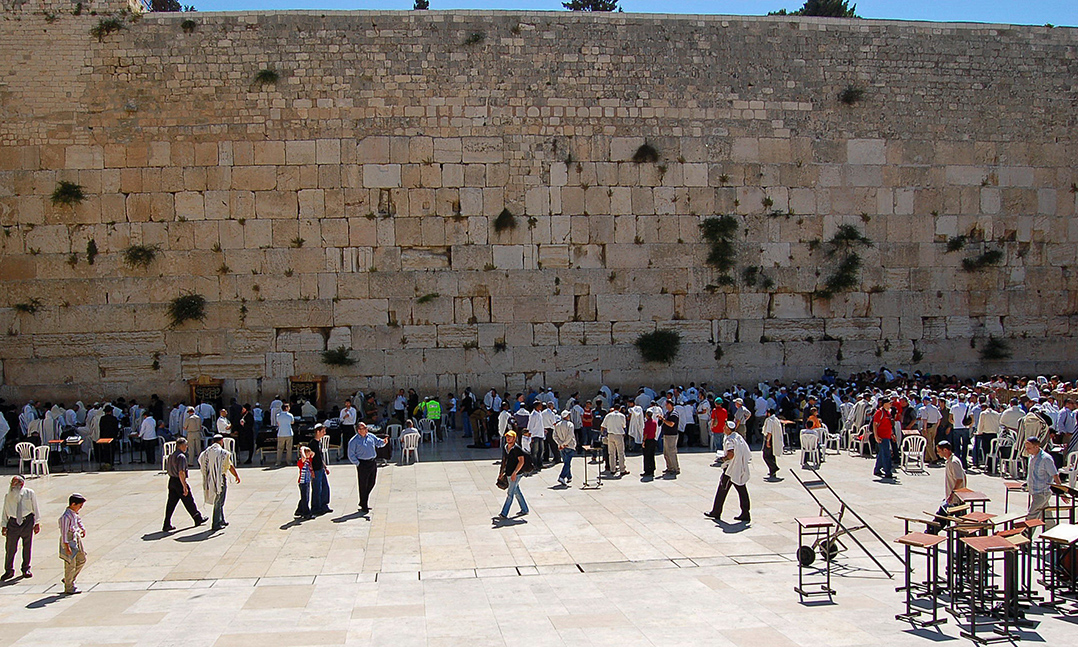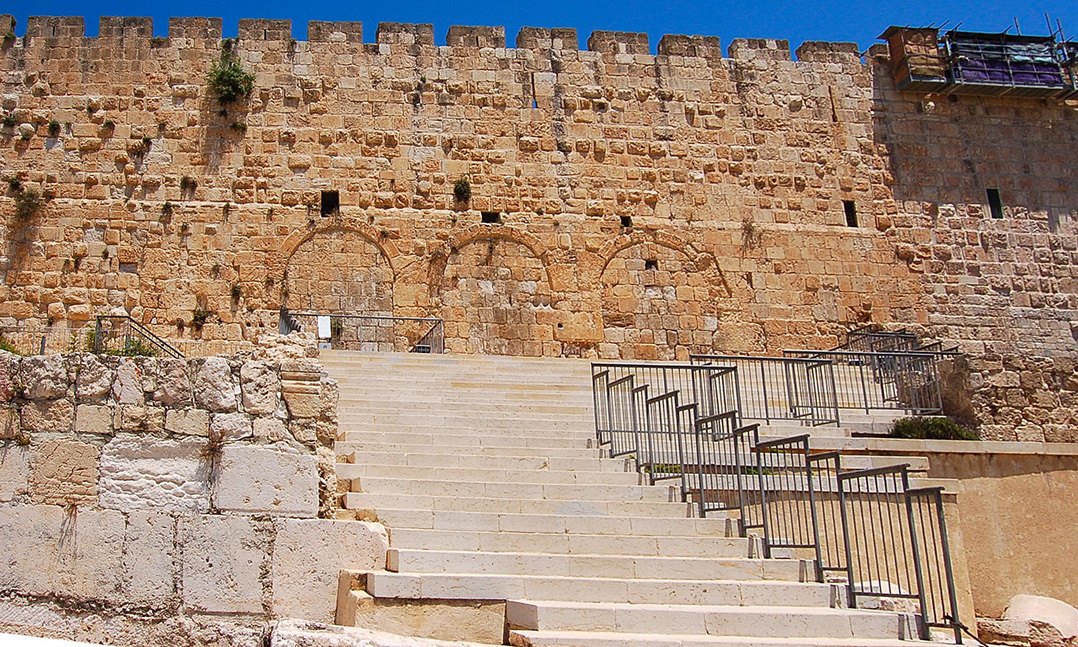Today, in our continuing tour of Israel and the Palestinian Territories, we visit the base of Jerusalem’s Temple Mount.
Beginning in 19 B.C., King Herod built a massive trapezoidal-shaped retaining wall around Mount Moriah, creating the Temple Mount on which he rebuilt the Jewish Second Temple. The 1,000-foot-long western wall extended about 100 feet above the Tyropean Road, ancient Jerusalem’s shop-lined main street. Tunnels within the filled area extended from gates in the southern wall to stairs leading out to a platform accommodating 100,000 people. An arched bridge, then the highest in the world, straddled the Tyropean Road, allowing visitors to enter from the west.
In A.D. 70, troops sent to Jerusalem by Emperor Nero to put down the First Jewish Revolt broke through the city walls and demolished Herod’s Second Temple, throwing its stone blocks onto the Tyropean Road. Rabbis advised Jews to shun the Temple Mount to avoid inadvertently encountering the area of the Temple’s Holy of Holies, so they began praying along the western wall below. Over time, debris collected above the Tyropean Road, eventually reaching near where the arched bridge had connected to the western wall. In 1560, Ottoman Emperor Suleiman allowed Jews to pray at a section of the western wall near houses in Jerusalem’s Moroccan Quarter.
After Israel gained control of the area around the Temple Mount in the Six-Day War in 1967, archaeologists began excavating the area, reaching the Tyropean Road in 1987 and uncovering the steps on the southern wall that Jesus would have climbed while teaching in the Temple courts. Israel razed the Moroccan Quarter, creating a plaza along a section of the western wall, where hundreds of people come to pray each day. A screen now divides the plaza so men and women can pray separately, many by inserting slips of paper between the wall’s massive blocks.






